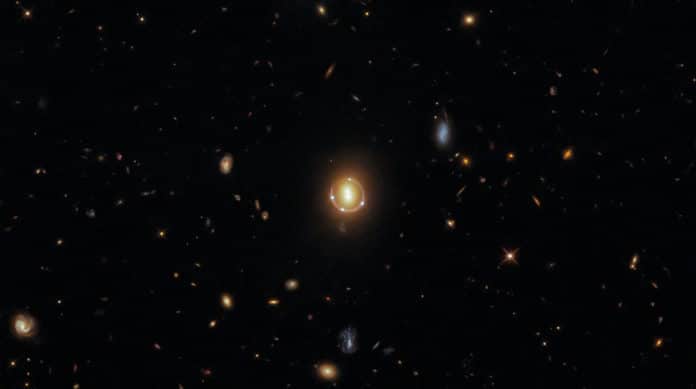Hubble’s sensitivity and high resolution allow it to see faint and distant gravitational lenses that cannot be detected with ground-based telescopes. Recently, Hubble captured a new photograph of the Einstein Ring that lies billions of light-years from Earth.
The image showing six luminous spots of light. Four among them are forming a circle around a central pair. Hubble data also indicates the seventh spot of light in the center, which is a rare fifth image of the distant quasar.
Sometimes, appearances can be misleading. The formation is not composed of six individual galaxies but only three. In reality, it is composed of a pair of galaxies and one distant quasar.
The central pair of galaxies in this image are genuinely two separate galaxies. The four bright points circling them and the fainter one in the center are five separate images of a single quasar named 2M1310-1714. The quasar lies further away from Earth than the pair of galaxies.
This Quintuple effect occurs because of gravitational lensing. Gravitational lensing occurs when a massive celestial body causes a sufficient curvature of spacetime for the path of light around it to be visibly bent, as if by a lens.
Acknowledgment: J. Schmidt
The light from the quasar has been bent around the galaxy pair because of their enormous mass. This offers a stunning view that four quasars surround the galaxy pair.
